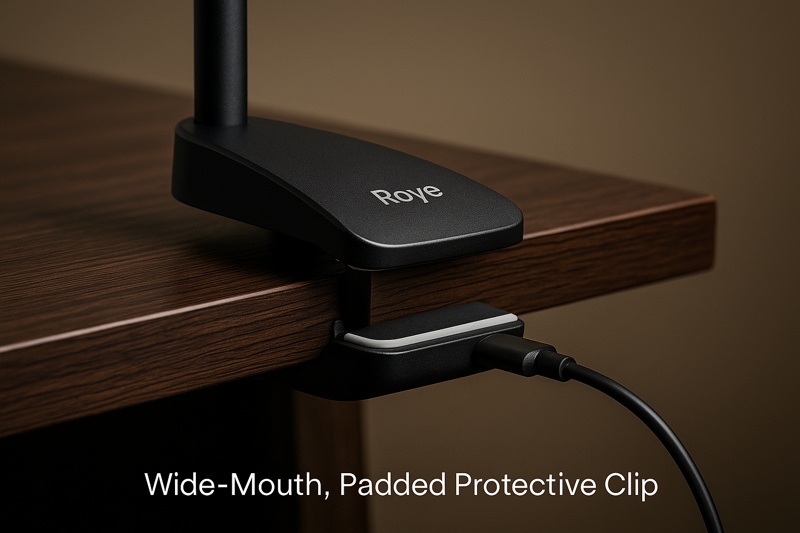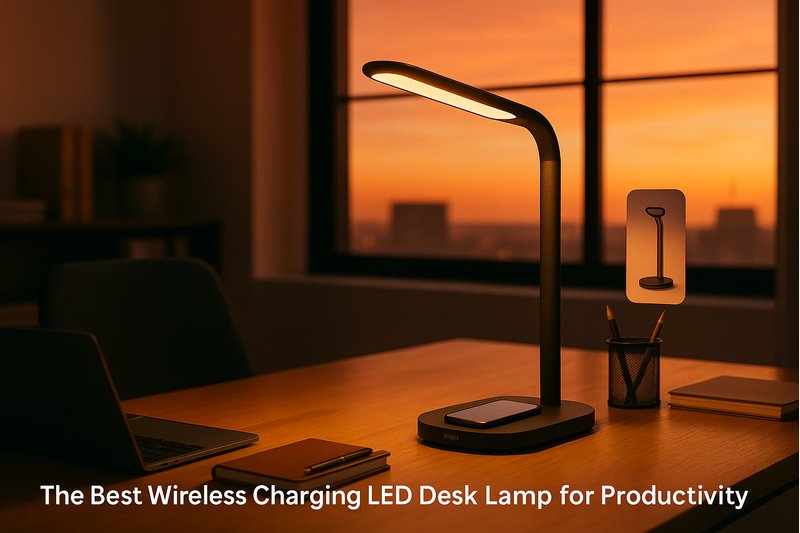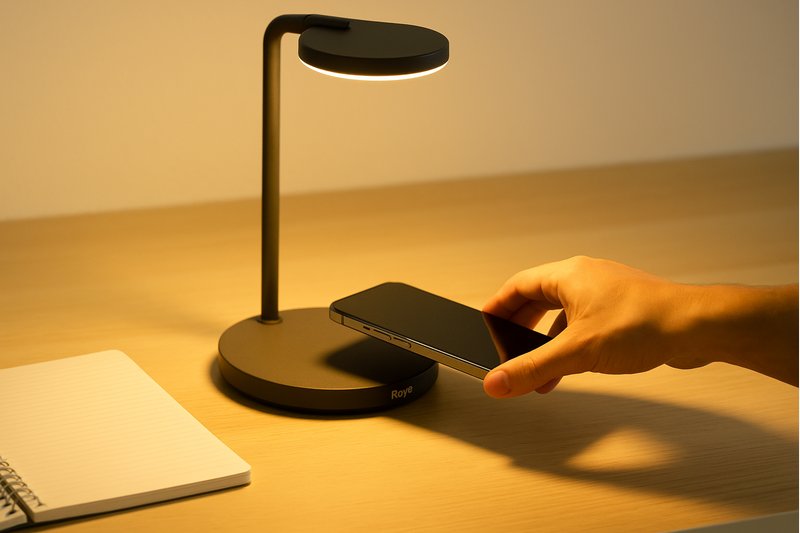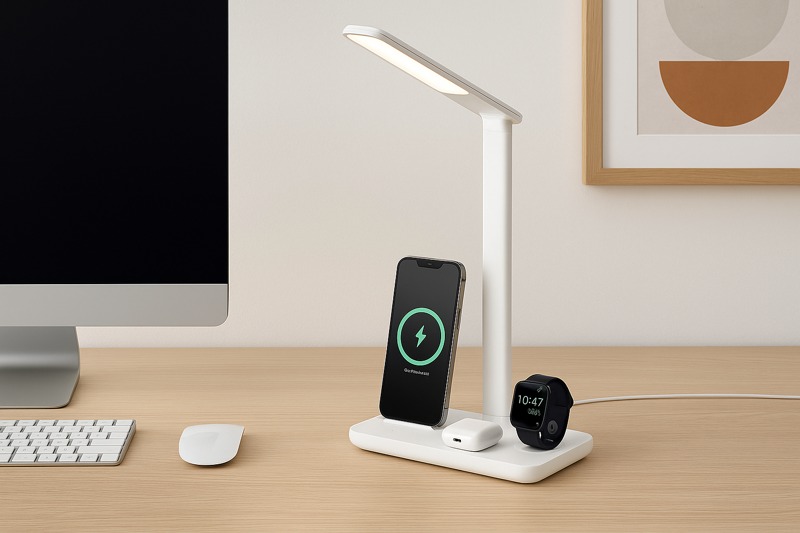When choosing the perfect desk lamp for your workspace or study area, one of the most important considerations is the color temperature of the lighting. The right color temperature can significantly affect the ambiance of a room, your productivity, and even your overall well-being. This is especially true for LED desk lamps, which are widely used for reading, working, and studying.
Color temperature refers to the color appearance of the light emitted by a lamp, measured in Kelvins (K). The range of color temperatures can vary from a warm, soft light to a cool, bright one, each of which can create a different atmosphere and impact your work performance. In this article, we will explore the different color temperature ranges of LED desk lamps, their effects on productivity and comfort, and how to choose the right lamp for your needs.
What Is Color Temperature?
Color temperature describes the hue of a light source, ranging from warm (yellowish) to cool (bluish) tones. It is measured in Kelvins (K), a unit of temperature that reflects how warm or cool a light appears. A lower Kelvin number indicates warmer light, while a higher Kelvin number indicates cooler light.
- Warm White (2700K–3000K): This color temperature is closer to the light emitted by incandescent bulbs and creates a cozy, relaxed atmosphere. It is ideal for areas where you want to create a comfortable environment.
- Neutral White (3500K–4100K): This is a more neutral tone, offering a balance between warm and cool. It provides a natural white light that works well in workspaces and areas that require good visibility without harsh brightness.
- Cool White (5000K–6500K): This range of color temperature is often referred to as "daylight" lighting and is ideal for work environments where high concentration and attention to detail are necessary. The cool light mimics daylight and can increase alertness and productivity.
- Daylight (6500K and above): This light is very similar to natural daylight, offering a bright, crisp light. It’s great for tasks that require fine details, such as reading, studying, and drawing.
The Importance of Color Temperature in LED Desk Lamps
Choosing the correct color temperature for your LED desk lamp has a significant impact on both the atmosphere of your workspace and your comfort during long hours of use. Here’s how color temperature can affect your daily activities and productivity:
1. Warm White Light (2700K–3000K)
Warm white light is often associated with a relaxed and cozy environment. This color temperature is commonly used in living rooms, bedrooms, and restaurants to create a warm, inviting atmosphere. However, when it comes to desk lamps for work or study, warm white light can sometimes be less effective for prolonged reading or writing.
- Benefits:
- Creates a calm and inviting environment.
- Ideal for relaxation and reducing stress.
- Great for areas where you may need to unwind after work or study.
- When to Use:
- Reading before bed: Warm light is perfect for evening reading because it is less stimulating and promotes relaxation.
- Home offices or lounges: If you use your desk for less intensive tasks like planning or answering emails, warm light might work well.
2. Neutral White Light (3500K–4100K)
Neutral white light strikes a balance between warm and cool tones. It offers a natural, crisp light that is neither too harsh nor too soft. This makes it a versatile choice for workspaces and areas where you need both comfort and clarity.
- Benefits:
- Provides a natural, balanced light that reduces strain.
- Improves focus and concentration without feeling too cold or clinical.
- Suitable for both task-oriented work and general office settings.
- When to Use:
- General office work: Ideal for areas where you need a steady and neutral light to support activities like typing, organizing, or brainstorming.
- Classrooms or study areas: Neutral white is often used in environments where reading and note-taking occur.
3. Cool White Light (5000K–6500K)
Cool white light is often referred to as "daylight" and is known for its bright, bluish hue. This type of light mimics the natural light that we experience outdoors and can help create an environment conducive to high focus, alertness, and precision.
- Benefits:
- Increases concentration and energy levels.
- Enhances clarity and visibility, making it easier to read, write, or perform tasks that require attention to detail.
- Helps reduce eye strain during long working hours.
- When to Use:
- Intensive work environments: Perfect for workplaces, study areas, or offices where productivity and detail-oriented tasks, like writing or drawing, are required.
- Bright workspaces: If you work in a dim or poorly lit area, a cool white light can help brighten the space and improve visibility.
4. Daylight (6500K and above)
Daylight is at the extreme end of the color temperature scale, resembling the daylight from the sun. It is often used in highly focused tasks, such as reading, studying, or precision work. It provides a crisp and clean light that mimics natural daylight, helping to keep people alert and productive.
- Benefits:
- Ideal for tasks that require fine details or careful reading.
- Great for eliminating shadows and creating an even, bright workspace.
- Helps regulate the circadian rhythm by mimicking the brightness of natural daylight.
- When to Use:
- Task-based work: Best for reading, studying, or any task requiring high attention to detail.
- Creative professionals: Perfect for artists, designers, or anyone who needs accurate color rendering and a highly focused light source.
How to Choose the Right Color Temperature for Your Needs
Selecting the correct color temperature for your LED desk lamp depends on several factors, including the type of work you do, your preferences, and the ambiance you want to create. Here’s a breakdown of how to choose:
1. For Reading and Studying
- If you're using the desk lamp primarily for reading or studying, a cool white (5000K–6500K) or daylight (6500K and above) lamp is ideal. These temperatures help improve focus and concentration, making it easier to read or write for extended periods.
- Neutral white (3500K–4100K) can also be a good choice for a more balanced light that isn’t too harsh but still provides clear visibility.
2. For Office Work
- For general office work, neutral white (3500K–4100K) is a great choice. It provides enough brightness without being overly harsh, offering a comfortable environment for tasks like typing, organizing, or meetings.
- If you need an extra boost of concentration and focus, cool white (5000K–6500K) is perfect for high-energy, detail-oriented tasks.
3. For Relaxation
- If you're looking for a desk lamp for more relaxed settings, such as a lounge area or for casual reading, warm white (2700K–3000K) will create a cozy, welcoming atmosphere. This is particularly important if you want to wind down after a long day.
Why Royelamp LED Desk Lamps Are the Perfect Choice
At Royelamp, we offer a wide range of LED desk lamps with adjustable color temperatures, allowing you to customize your lighting to suit your specific needs. Whether you need flicker-free, eye-care technology, or adjustable color temperatures, Royelamp’s LED desk lamps are designed to offer superior performance and comfort.
Our lamps are engineered to provide the perfect balance of brightness, energy efficiency, and eye care while offering a variety of color temperature options from warm to cool light. With customizable features and sleek designs, Royelamp’s products are ideal for businesses, educational settings, and home offices.
For more information on how to enhance your workspace with the perfect LED desk lamp, visit www.royelamp.com or contact us at [email protected] to discuss your specific requirements.







